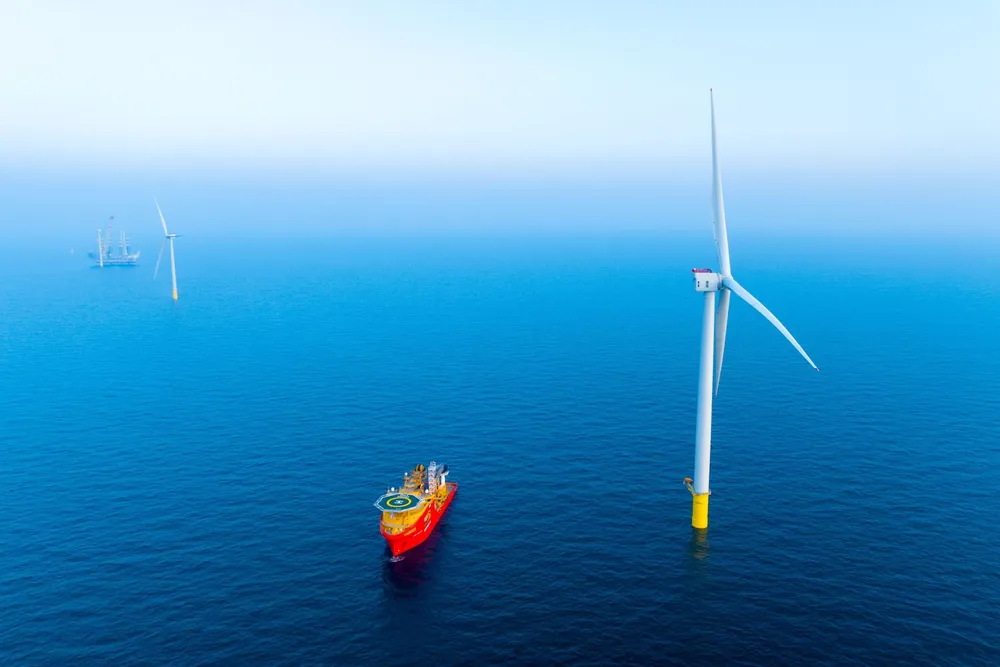RWE project will cost Dogger Bank $778m in wake losses, say Equinor and SSE
Dispute over wake losses between developers of two huge offshore wind farms one of many currently underway in UK planning system

Equinor and SSE say that wake losses caused by an RWE offshore wind project will cost their massive Dogger Bank arrays £582m ($778m) over their lifetime, arguing it would be "perverse" not to require mitigation or compensation as a result.
The Norwegian oil major and British power giant submitted the estimate last week in the planning proceeding for Dogger Bank South, a 3GW project that German utility RWE is developing.
Equinor and SSE each hold 40% stakes in the 3.6GW Dogger Bank project, with Norway’s Vargronn, a joint venture between Eni's Plenitude unit and HitecVision, owning the remainder.
Owners of existing wind farms and those that have already won planning consent are demanding mitigation or compensation for wake losses they could suffer from new projects seeking approval from planning authorities.
Developers of new projects – with RWE the most prominent example – argue that UK law does not require mitigation or compensation for such losses.
The Dogger Bank project is split into three 1.2GW phases – A, B and C – due to be fully commissioned between this year and 2027. Equinor and SSE say this means they will be operational before construction begins on Dogger Bank South, which is itself broken down into two 1.5GW phases.
Equinor and SSE carried out a wake loss assessment which they said shows that Dogger Bank South would result in wake losses for all phases of their project: 4.1% for Dogger Bank A, 1.6% for Dogger Bank B and 0.6% for Dogger Bank C.
“It is difficult to forecast what the financial impact of these wake losses would be” on the Dogger Bank projects, they said, noting this may vary in future due to the “capacity factor and the strike price for electricity at the time”.
Indicatively, however, the Dogger Bank developers say Dogger Bank South will cost their arrays £20m annually.
“For the total period of concurrent operations,” based on the Contract for Difference secured for the Dogger Bank sites in 2019, Equinor and SSE estimate Dogger Bank South will cost their arrays £582m.
That is a “significant economic loss”, they said, adding that Dogger Bank South has “not sought to mitigate or compensate” the impact it will have.
Annually, based on a capacity factor of 55%, the Dogger Bank developers said their arrays would suffer a total energy loss of 364GWh. In total over the project lifetime, they estimated the energy loss would stand at 10.7TWh.
With these potential losses in mind, the Dogger Bank developers say it would be “perverse” for energy secretary Ed Miliband not to require some mitigation or compensation from Dogger Bank South for those losses.
Orsted has also intervened in the Dogger Bank South process raising concerns over wake losses the project could cause its Hornsea 3 and Hornsea 4 wind farms, which have a 5.5GW combined capacity.
RWE and Masdar have argued that the issue of wake effects should “sit outside” the planning regime. They have in any case submitted their own wake loss assessment which they say shows that wake losses for Dogger Bank A, the worst affected project, would only be 2%.
They also argue that various methods of mitigating wake losses, including curtailing production at one wind farm to try and allow more generation at the next, result in an overall loss of generation between sites.
The UK government last week published new draft National Policy Statements, which provide the legal framework for planning decisions, which specify that developers will not have to pay compensation for wake losses their projects cause neighbouring sites. Developers must rather show they have taken “all reasonable steps to minimise as far as possible the impact of wake effects.”
Dogger Bank A recently hit the milestone of installing half of its 95 GE Haliade-X 13MW turbines. First power from the project was produced as far back as 2023.
Wake losses 'huge blow' to equity return for project
Clément Weber, a managing director at financial advisory Green Giraffe, said that for a project using non-recourse debt, only 20% of net revenues go to the equity. Because the debt repayment, operational expenditure and insurance costs are fixed, drops in gross revenue – as wake losses cause – will impact “almost exclusively the equity.”
In the case of Dogger Bank A, which would be the worst-affected project, a 4.1% impact on its energy output can decrease the equity flow by 30%, which he said is “obviously huge and very detrimental to the long-term equity return.”
“On the other hand,” Weber noted that in other countries such as Belgium, the Netherlands or Germany, potential wake effects from neighbouring wind farms are already factored into financial calculations when the investment decision is made. It is therefore unlikely that the Dogger Bank developers in this case only now discovered the wake losses as a “complete surprise”, weakening the argument that this has an “unfair impact on their business case.”
“Accounting for internal and external wake effects is as old as the offshore wind industry and we have implemented them in both our debt and equity models for at least 15 years.”
(Copyright)